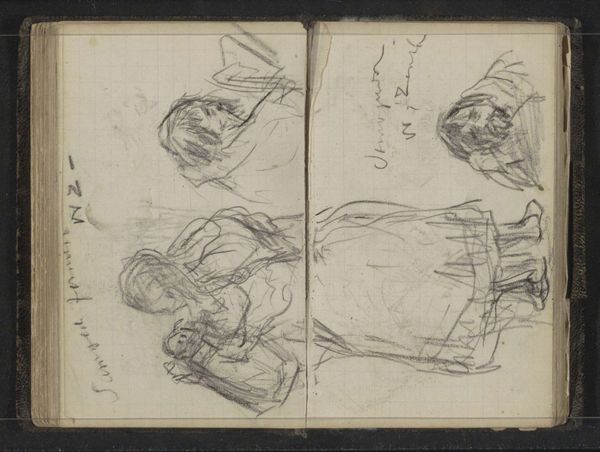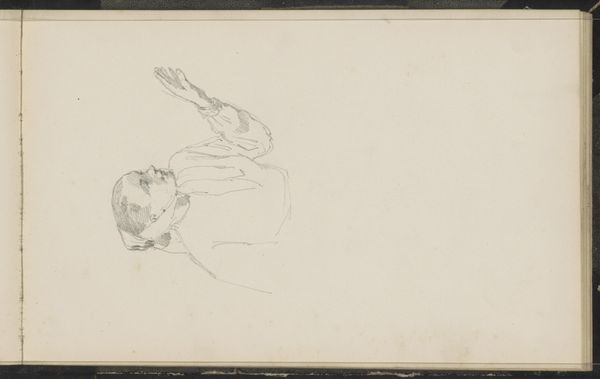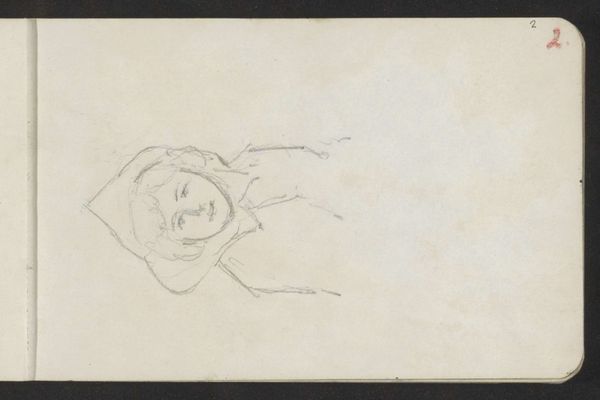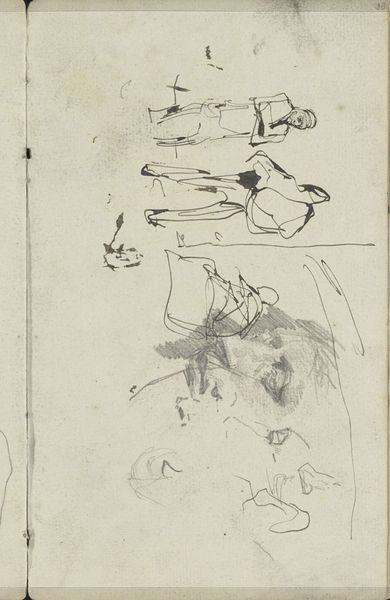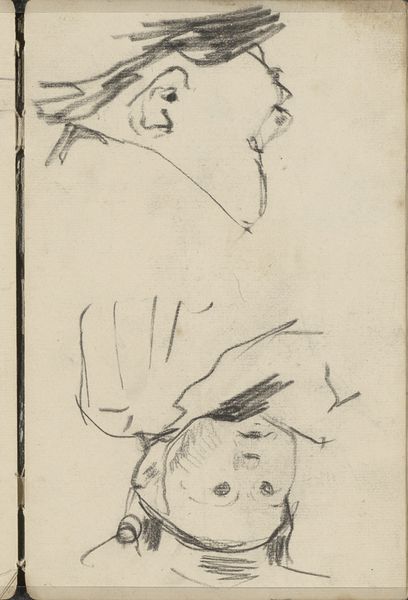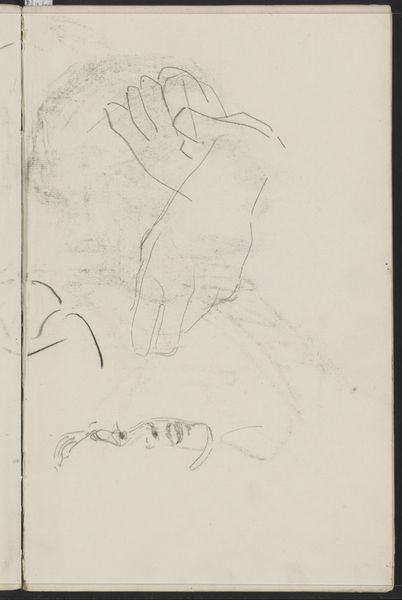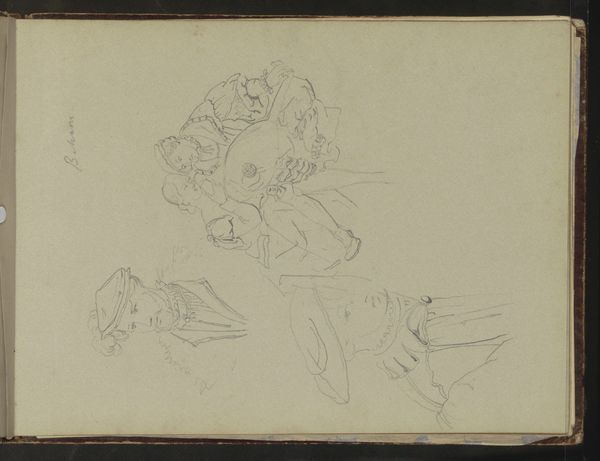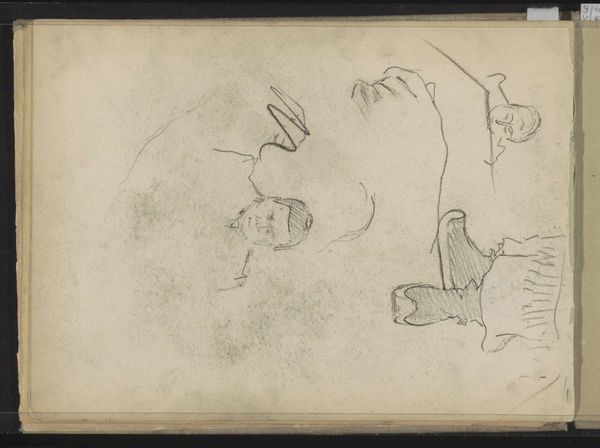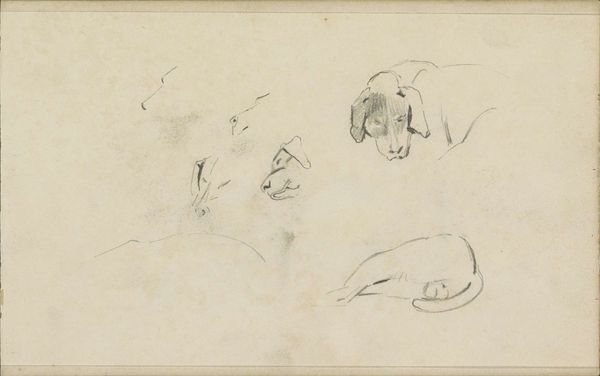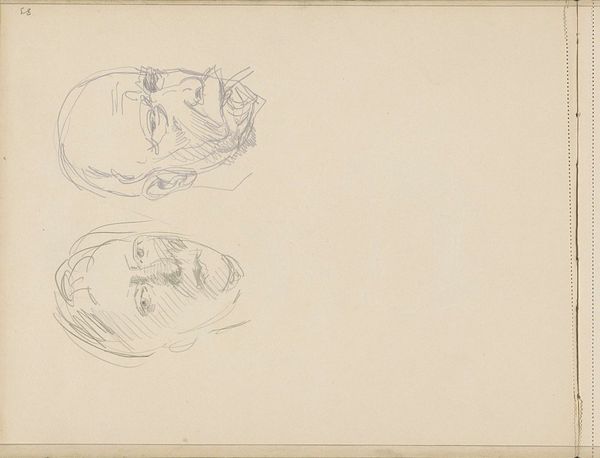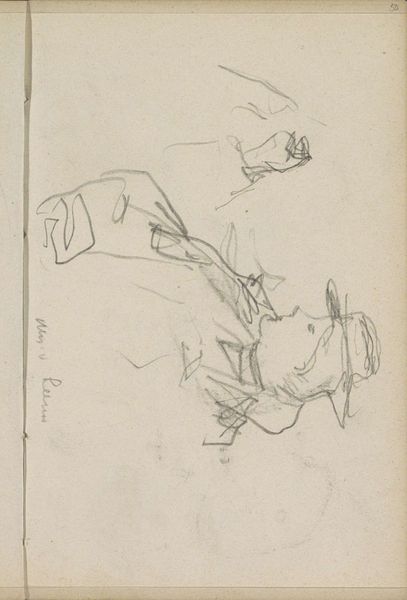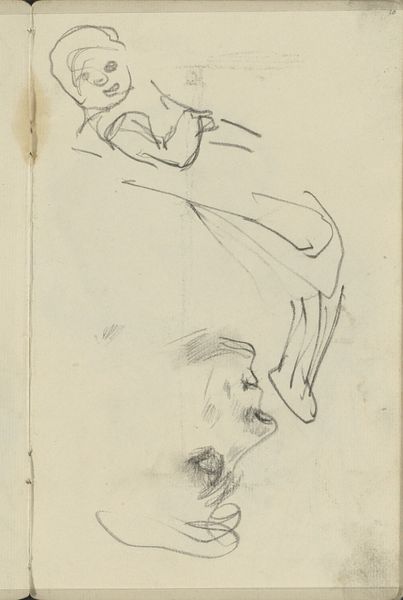
drawing, paper, pencil
#
portrait
#
drawing
#
pencil sketch
#
figuration
#
paper
#
pencil
Copyright: Rijks Museum: Open Domain
Curator: Here we have "Two Women with Up-do's" by Johanna van de Kamer. It is, as you can see, rendered in pencil on paper, and thought to have been created sometime between 1883 and 1922. My first impression is...intimacy. Editor: Intimacy? I see potential energy. Two figures captured in graphite – quickly sketched, perhaps in the liminal space between waking and sleeping. Their gazes, lifted upwards, away, invite curiosity about their dreams, their hopes… the pencil marks themselves reveal layers upon layers of touch. Curator: Oh, layers of touch! I like that. It’s true, you can almost feel the artist’s hand moving across the page, hesitating, pressing harder to define a line of the jaw, a curve of the neck. This to me speaks of a deeper emotional resonance – not just capturing likeness, but really feeling the essence of the sitter. Van de Kamer's subtle gradations remind me of gazing through fog; one almost sees an unveiling rather than the stark outlines common to pencil portraiture. Editor: Absolutely. I'm fascinated by how the economy of line – a mere suggestion here and there – generates form and presence. The material itself is quite humble—pencil and paper—ordinary, almost disposable. What elevates it is the artist’s deft control over the graphite, the pressure applied to the paper, which results in such luminous shadows and highlights. We cannot discount how material constraints like pencil sharpness affects our view of figuration and portraiture in general. Curator: So, you’re thinking about how readily accessible and uncomplicated these basic supplies might have been? The ease of creation speaks to the urgency and directness of the artist's experience and expression? I tend to agree. It removes a layer of formal artifice that paint would naturally impose. It makes the drawing as vulnerable as a passing thought, and perhaps as true. There’s nothing overtly stylized, simply an unfiltered glimpse into the subject’s inner life, captured through fleeting expression. It becomes almost… voyeuristic! Editor: Voyeuristic! Hmm. Perhaps it reflects the democratization of image-making enabled by mass-produced pencils and paper. But maybe the "voeyeurism," as you put it, arises precisely because the act of drawing reduces these women to objects consumed by observation; laboring to produce sketches from simple supplies may highlight this exploitation, consciously or unconsciously. I cannot simply read the artist’s feelings as completely divorced from their means and circumstances of production. Curator: It seems, then, that despite our diverging points, we are nonetheless compelled by this sketch! Whether simple tools used urgently or the shadow of production itself at play in figuration, van de Kamer encourages all to ponder what exists beyond immediate outlines and aesthetics. Editor: Precisely. A work that draws from simplicity in means that, perhaps ironically, reveals multifaceted levels of artistry.
Comments
No comments
Be the first to comment and join the conversation on the ultimate creative platform.


